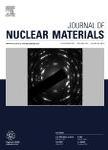版权所有:内蒙古大学图书馆 技术提供:维普资讯• 智图
内蒙古自治区呼和浩特市赛罕区大学西街235号 邮编: 010021

作者机构:Univ Sci & Technol Beijing Sch Mat Sci & Engn Beijing 100083 Peoples R China Univ Sci & Technol Beijing State Key Lab Adv Met & Mat Beijing 100083 Peoples R China
出 版 物:《JOURNAL OF NUCLEAR MATERIALS》 (核材料杂志)
年 卷 期:2015年第466卷
页 面:491-495页
核心收录:
学科分类:08[工学] 0805[工学-材料科学与工程(可授工学、理学学位)] 0827[工学-核科学与技术]
基 金:National Magnetic Confinement Fusion Program [2014GB104003, 2014GB120001] National Natural Science Foundation of China [51371031, 51471024]
主 题:Hydrogen isotopes Microstructure Irradiation hardening Precipitate CLAM
摘 要:The isotope effect of hydrogen in irradiation damage plays an important role in the development of reduced activation Ferritic/Martensitic steels in nuclear reactors. The evolutions of microstructures and mechanical properties of China low active martensitic (CLAM) steel subjected to hydrogen and deuterium ions irradiation are studied comparatively. Under the same irradiation conditions, larger size and smaller density of dislocation loops are generated by deuterium ion than by hydrogen ion. Irradiation hardening occurs under the ion irradiation and the hardening induced by hydrogen ion is higher than by deuterium ion. Moreover, the coarsening of M23C6 precipitates is observed, which can be explained by the solute drag mechanisms. It turns out that the coarsening induced by deuterium ion irradiation is more distinct than by hydrogen ion irradiation. No distinct variations for the compositions of M23C6 precipitates are found by a large number of statistical data after hydrogen isotopes irradiation. (C) 2015 Elsevier B.V. All rights reserved.